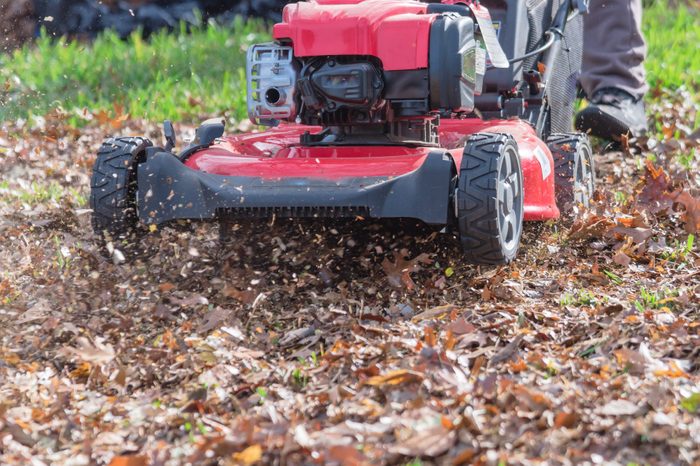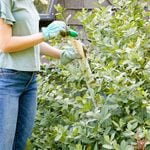Here’s Why Mowing Leaves Is Better Than Raking Them

Mulching leaves is better for your yard, your back and your budget
There are lots of reasons to love fall: apple picking, pumpkin carving, gorgeous fall flowers in the garden. Yet while the changing autumn leaves are beautiful on the trees, once they fall it’s time for a chore that everyone dreads: Raking leaves. Every year, many of us ask ourselves: Should I rake leaves or just leave them?
Some, like David Mizejewski of the National Wildlife Federation, say you “shouldn’t feel obligated to get rid of every last fallen leaf in your yard this fall.” A leaf layer can create an ecosystem for many wildlife species, including butterflies, toads and chipmunks. Decomposing leaves are also great for the soil.
Still, most lawn owners probably don’t want to leave a thick layer of leaves to potentially smother their grass. But you still don’t have to rake. Mulching your leaves—mincing them to shreds with mower—can also improve your lawn. You can collect those minced leaves to repurpose them as mulch or collect them in bags as part of your fall lawn prep.
How Do I Mulch Leaves With a Mower?
Any sort of rotary mower will do the job, chopping up any kind leaves, with just a few passes. Set your mower’s height to its highest setting. Then, according to Scotts, “Take the grass catcher off your mower and mow over the leaves on your lawn. You want to reduce your leaf clutter to dime-size pieces. You’ll know you’re done mowing leaves when about half an inch of grass can be seen through the mulched leaf layer.” And if you’d rather pick up the leaves, just keep your grass catcher on. You can use those collected leaf bits for composting.
What are the Benefits of Mulching Leaves With my Mower?
Mulching it can save you time, effort and your back. Plus, you save money on garbage or lawn bags. But there’s more benefits than that. Once the leaf bits come to a rest on your lawn, microbes and worms start their work recycling them. By springtime, you’ll see great results with a greener lawn. You can also use the decomposing piles of leaves to cover up bare spots between turf plants, where so many weed seeds germinate. Studies by turfgrass specialists at Michigan State University have shown that nearly 100 percent decrease in dandelions and crabgrass after mulching leaves for just three years.
Mowing and Mulching is a Better Use of Resources
Raking leaves costs you in ways beyond your time and sore muscles. Your local taxes pay for the trucks and workers who collect your leaves. Your leaf bags all end up in landfills. If you burn leaves, you’re just billowing carbon into the atmosphere. Mulching recycles natural resources and gives you richer soil to boot.


